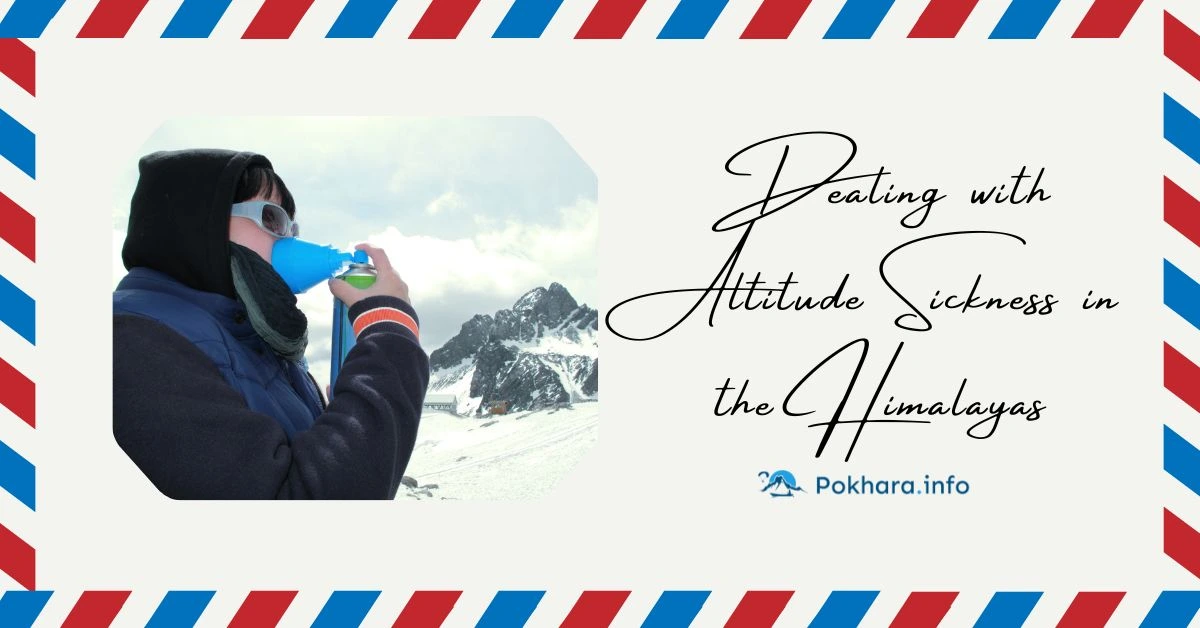Understanding Altitude Sickness
Altitude sickness (AMS - Acute Mountain Sickness) happens when your body cannot get enough oxygen at high altitude.
These treks often reach 3,500-5,400m (11,500-17,700 ft), where AMS risk is significant.
Types of Altitude Illness
Acute Mountain Sickness (AMS)
Mild to moderate symptoms: Headache, fatigue, dizziness, loss of appetite, nausea, disturbed sleep.
High Altitude Cerebral Edema (HACE) - Life-threatening
Severe headache, confusion, loss of coordination, staggering walk, hallucinations.
High Altitude Pulmonary Edema (HAPE) - Life-threatening
Persistent cough, breathlessness at rest, frothy or pink sputum, and extreme fatigue.
Risk Zones in These Trekking Areas
Annapurna Circuit: Thorong La Pass (5,416m) - major risk zone.
Mustang & Muktinath: Lo Manthang (3,800m), Muktinath (3,800m) - moderate risk, risk rises if arriving too fast.
Manang: Above 3,500m - acclimatization days crucial.
Dolpo Region: Several passes above 5,000m - very high risk, remote with limited rescue options.
Prevention Strategies
(The golden rule: Climb high, sleep low)
Acclimatization Rules
Above 3,000m: Gain altitude slowly - not more than 300-500m sleeping elevation per night.
Take a rest/acclimatization day every 1,000m.
If available, do a short hike to a higher point in the day, then return to sleep lower.
Hydration & Nutrition
Drink 3-4 liters of water daily (avoid excessive alcohol/caffeine).
Eat high-carb meals for energy.
Avoid heavy alcohol for the first 3-4 days at altitude.
Pacing
Walk slowly - rest step technique on steep climbs.
Avoid the competitive pace with faster trekkers.
Acclimatization Days
Manang (3,540m) on Annapurna Circuit is the classic acclimatization stop, including a side hike (e.g., Ice Lake, Praken Gompa) before going higher.
Recognizing Symptoms Early
Symptom Severity | Common Signs | Action Needed |
Mild AMS | Headache, slight nausea, tiredness, trouble sleeping | Rest, hydrate, avoid climbing higher until symptoms improve |
Moderate AMS | Worsening headache, persistent nausea/vomiting, dizziness, loss of coordination | Stop ascent immediately, rest at same altitude or descend |
Severe AMS / HACE / HAPE | Confusion, staggering walk, breathlessness at rest, blue lips/fingernails, cough with pink sputum | Emergency descent + oxygen + urgent evacuation |
Immediate Actions if Symptoms Appear
Mild symptoms - Stop ascending, rest at the same altitude until fully recovered.
If symptoms worsen, Descend 500-1,000m as soon as possible.
For severe symptoms-
Immediate descent is non-negotiable.
Administer oxygen if available.
Arrange emergency evacuation (helicopter in Nepal via trekking insurance).
Role of Medication
We will not provide direct dosages here.
Certain medications can help with prevention and treatment, but must only be used if prescribed by a doctor before your trek.
Before your trip, consult a travel or altitude medicine specialist to discuss your trekking plan and whether medication is recommended for you.
Oxygen & Pressure Bags
Oxygen cylinders: Available in some tea houses in Manang, Muktinath, and Jomsom, expensive and with limited supply.
Portable hyperbaric chamber (Gamow bag): Carried by some expeditions and remote medical camps, can stabilize a patient until descent.
Communication & Evacuation
Carry a Nepali SIM card (Ncell/Nepal Telecom) for emergency calls.
In remote Dolpo, carry a satellite communicator (Garmin inReach, SPOT) - cell coverage is nonexistent.
Ensure you have trekking insurance that covers helicopter evacuation above 5,000m.
Special Notes for These Trekking Areas
Annapurna Circuit: Never skip acclimatization in Manang; Thorong La is the highest risk point.
Mustang: Risk lower but still possible; travelers from Pokhara/Jomsom can gain altitude too quickly.
Muktinath: Pilgrims arriving by road/flight can be at sudden risk - recommend one night acclimatization in Jomsom or Kagbeni.
Manang: Stay at least 2 nights before crossing the higher passes.
Dolpo: Always carry your own AMS response kit - rescue may take days.
Final Safety Checklist
Build rest days into your itinerary.
Learn to recognize early AMS signs.
Never sleep higher if symptoms persist.
Descent is the most effective treatment.
Get insurance covering high-altitude rescue.
Have an emergency communication plan.

